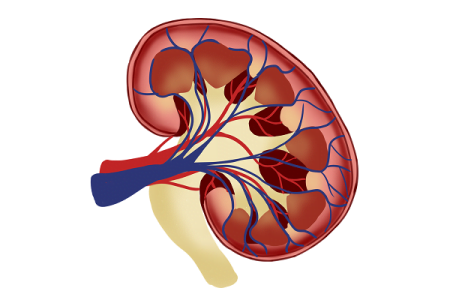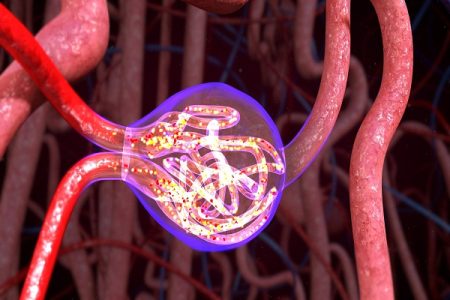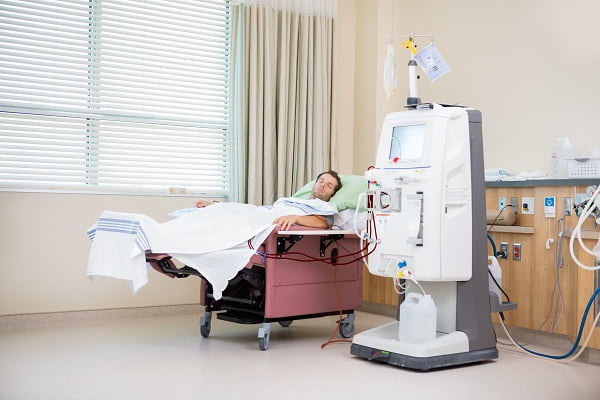Many people across the world live with debilitating health conditions. From blindness to deafness, to Down’s syndrome to muscular dystrophy, or the loss of limbs. Such afflictions are obvious and are clearly apparent to everyone. But there are other health issues that can be equally debilitating and ruinous to a person’s life but are not so visually obvious to the casual observer. One such condition is renal, or kidney, failure.
Unseen to anyone without expert skills in that particular area of medicine, but impactful on a sufferer’s health, wellbeing and quality of life, kidney failure can be debilitating in many ways. This, largely unseen and unnoticed health issue not only affects the life of the sufferer, but also those of their family.
It would be understandable to think that kidney disease was not overly common, sadly the truth is somewhat different. Worldwide it is estimated that there are in excess of 850 million people suffering with some form of kidney disease, which can devastate their lives and the lives of their loved ones.
Originally referred to as “Uremic Poisoning,” the term “Kidney Failure” appeared around 1847, so acute and chronic kidney failure are not a modern health complaint, in fact it has a long history. Early treatments were of course somewhat crude and had very little basis of medical science, these included induced sweating and bloodletting.
Bloodletting was indeed a practice that was nothing more than a medical fashion, with many practitioners getting carried away by it. Indeed, it is very likely that bloodletting was the actual cause of many unnecessary deaths. Thankfully, serious medical science prevailed.
Later in the 19th century the development of dialysis started to emerge. Dialysis is based on physical and chemical principles which are credited to Thomas Graham. It was George Haas and William Kolff that further developed the principle in the 20th century to be what is now the basis of today’s dialysis.
Typical Symptoms of Renal Failure
Kidney disease, or renal failure, affects the lives and daily routines of the sufferer in many ways. These will include fluid retention, the Kidneys filter excess fluid and waste from the body. When this normal function fails, or becomes deficient, fluid can build up, which commonly causes uncomfortable swelling in the ankles, feet, and the leg as a whole, as well as the hands.
It is common for sufferers to experience fatigue and weakness. Renal health issues can lead to anemia, this results in a reduction in the amount of oxygen being carried in the blood, this can lead to a constant feeling of weakness and fatigue.
Kidney disease will often affect the frequency of the need to urinate, which will lead to more or less urine than would be normally expected. Additionally, as the waste products accumulate in the body, nausea and vomiting become an issue for the sufferer.
Shortness of breath due to the buildup of fluids in the lungs is common, as are muscle cramps and spasms. Itchy skin and high blood pressure are also common, which can cause other, related, health complications for the sufferer.
Sufferers are at a greater risk of developing heart disease, and with a depleted immune system, they are vulnerable to a plethora of other infections. It should also be noted that sufferers of renal health issues, and the way in which they affect their lives, often experience mental health problems as a result.
These symptoms should never be ignored, and, if experienced, expert medical help should be sought. Finding specialists in this complex area of medical science is essential. It is advisable to seek diagnosis and treatment from skilled practitioners, with vast knowledge and experience in the field, such as those at Samitivej Hospital’s Hemodialysis Department.
Renal Failure Treatment
Hemodialysis has been the backbone of treatment for kidney failure for many years now and is likely to remain so. Through the development of the process, it has evolved into efficient, painless, and non-invasive treatment for patients.
When the kidney’s fail to function properly hemodialysis acts as a substitute for that process. The treatment is carried with the use of a dialyzer. This machine takes blood from the patient which is then circulated through the machine to remove excess fluid, chemicals, and waste. Then, the blood is then returned to the patient’s body.
But firstly, before hemodialysis can begin, a vascular access site needs to be sort. Typically, this will be found in the patient’s arm. The access point will be through a fistula which connects an artery to a vein. Alternatively, it may be a graft, using a plastic tube to connect the blood vessels. Should there be an emergency, a temporary catheter can be used.
Two extremely fine needles are inserted into the access site. One of which will draw the patient’s blood from the body and ferries it to the dialysis machine. The second of these two needles acts in returning the cleaned blood back into the patient’s bloodstream.
The unclean blood enters the dialyzer, acts as an artificial kidney, and using a special fluid called dialysate the dialyzer removes all the unwanted waste, chemicals, and excess fluid before returning the blood back to the patient.
As a general rule, hemodialysis treatments can be expected to last between 3 and 5 hours. The treatment process would normally be conducted 3 to 5 times each week, varying on each patient’s particular requirements. At the Samitivej Hospital Hemodialysis Department this is conducted within the specifically designed hemodialysis suites.
These suits have been designed solely for the use of patients requiring hemodialysis and caters for their particular needs. The process of hemodialysis at the department is now a high-tech driven treatment aided by sophisticated computer programs and is conducted and seen by highly trained medical staff.
The patients being treated in this ultra-modern facility can enjoy many of the comforts they would expect at home. Electric beds allow the patient to relax in a comfortable posture. They can watch television, there is also an area where food can be prepared. The on-hand staff are dedicated to caring for each patient’s physical and mental wellbeing.
For patients suffering kidney failure, hemodialysis is their lifeline to maximizing their quality of life, both physically and mentally. The one facility that maximizes the results of hemodialysis is Samitivej Hospital’s Hemodialysis Department. With its envious reputation for care and treatment, it is now treating patients from across the world, as well as the Indigenous population and resident expats.







